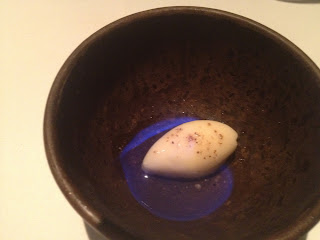 At times, especially with desserts, a recipe calls for coffee. I don't like how depending on how you brew your coffee the results in the recipe can change. You also need to account for the water content in the coffee used, and while the coffee may be strong, in effect you are still diluting the mixture. This is where using an instant coffee can work well - you add the coffee flavour and omit the water. The problem now is that most instant coffee is crap.
At times, especially with desserts, a recipe calls for coffee. I don't like how depending on how you brew your coffee the results in the recipe can change. You also need to account for the water content in the coffee used, and while the coffee may be strong, in effect you are still diluting the mixture. This is where using an instant coffee can work well - you add the coffee flavour and omit the water. The problem now is that most instant coffee is crap.
Starbucks Via is an exception. Served just as coffee, you may not even notice a difference with fresh brewed. Now to switch to cooking - let's take a custard as an example. Say you know the perfect ratio of yolks to cream for the texture you want, if you want to make a coffee custard, you now have to do some fancy footwork to account for the added coffee. If you use Via, you can make your custard as usual, then dissolve the coffee into the custard to the flavour you like (it dissolves beautifully) with virtually no effect on the final structure. An added bonus with respect to custards, Via is less acidic and less likely to break the emulsion (I've seen it happen using espresso).
I still have my regular coffee for drinking at home, but like to keep at least a few packs of Via around for cooking. You can get it sent straight to you home if you like. CHECK IT OUT HERE.










































